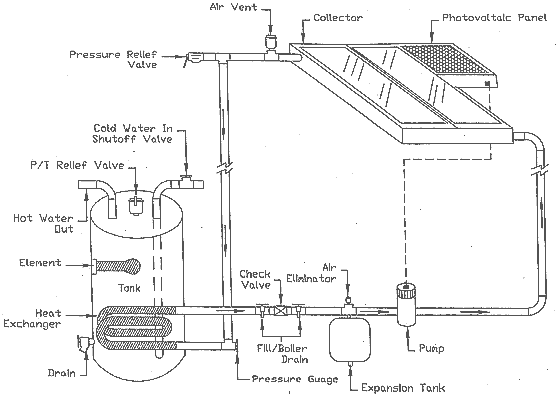Design
In the late 1970s, large corporations like Exxon, Reynolds Aluminum, General Electric, and Grumman Aircraft (not to mention all the little guys like me) were experimenting with a variety of design strategies for solar hot water systems.
We all knew that if you put a black surface in a box and exposed it to sunlight, it would get hot. How to make the rest of the system perform reliably without tearing itself apart over time was the real challenge.
HVAC design engineers have used pressurized glycol systems for decades to transfer heat from boilers various loads. This method is the standard for hydronic heating systems and many industrial heat transfer tasks.
Naturally, they applied this design to solar systems, treating the collectors as the boiler and the tank as the receiver. If you walk into most professional engineering firms and ask them to design you a hydronic heating system OR a solar system, they will grab their manuals that show how to assemble a pressurized glycol loop…

